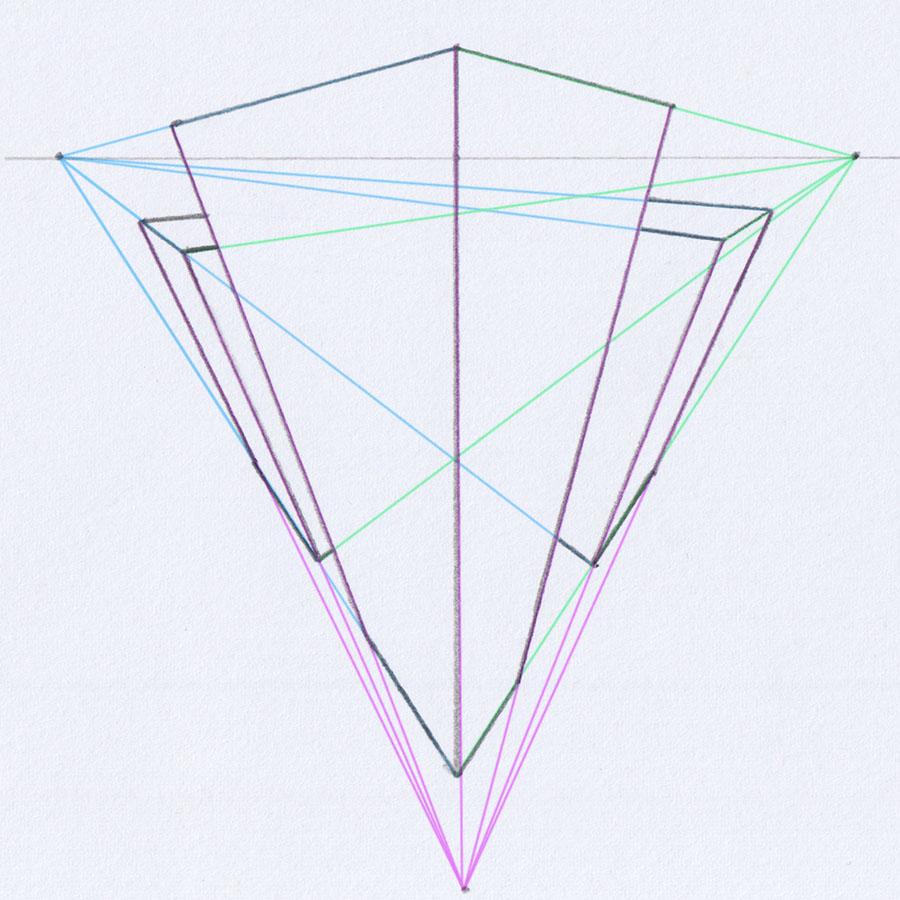Through perspective drawing, artists can create the illusion of spatial depth on a two-dimensional surface like paper or canvas. It is a method of realistically representing spatial dimensions.
Perspective drawing can be a challenge, even for experienced artists. Correctly depicting spatial depth and perspective requires an understanding of geometric principles and a lot of practice. However, it is important to emphasize that beginners should not be discouraged. With patience and practice, even novices can learn this skill.
Basics of Perspective Drawing
An object in the distance appears smaller than an object nearby due to a phenomenon called “linear perspective.” Linear perspective means that the lines extending from an object to our eyes converge as they get further away. This makes the object appear smaller and take up less space on our retina.
When drawing, we need to attempt to depict what our eyes and brain process naturally. This means adjusting the size of objects in relation to each other when drawing.
Unknown author, Public domain, via Wikimedia Commons
Artists have been dealing with this topic for centuries, and there are various methods, such as the thread grid (also used by Albrecht Dürer), which can be used to draw from references in correct perspective.
In this article, however, we will not use a thread grid, but will look more closely at guiding lines and points that we can use to draw correctly in perspective just as well.
Albrecht Dürer, Public domain, via Wikimedia Commons
What is a Horizon Line?

The horizon line is a horizontal line on your paper or in your drawing that separates the ground from the sky. In most cases, it is not visible as it is obscured by houses, trees, mountains, or hills. An exception is the sea, where the horizon line can be clearly seen.

The horizon line represents the viewer’s or artist’s eye level. Everything drawn above this line appears to the viewer as above their field of view, while everything below is perceived as below their field of view. The placement of the horizon line significantly influences the perspective of your artwork, which we can take advantage of.
What are Vanishing Points and Vanishing Lines?
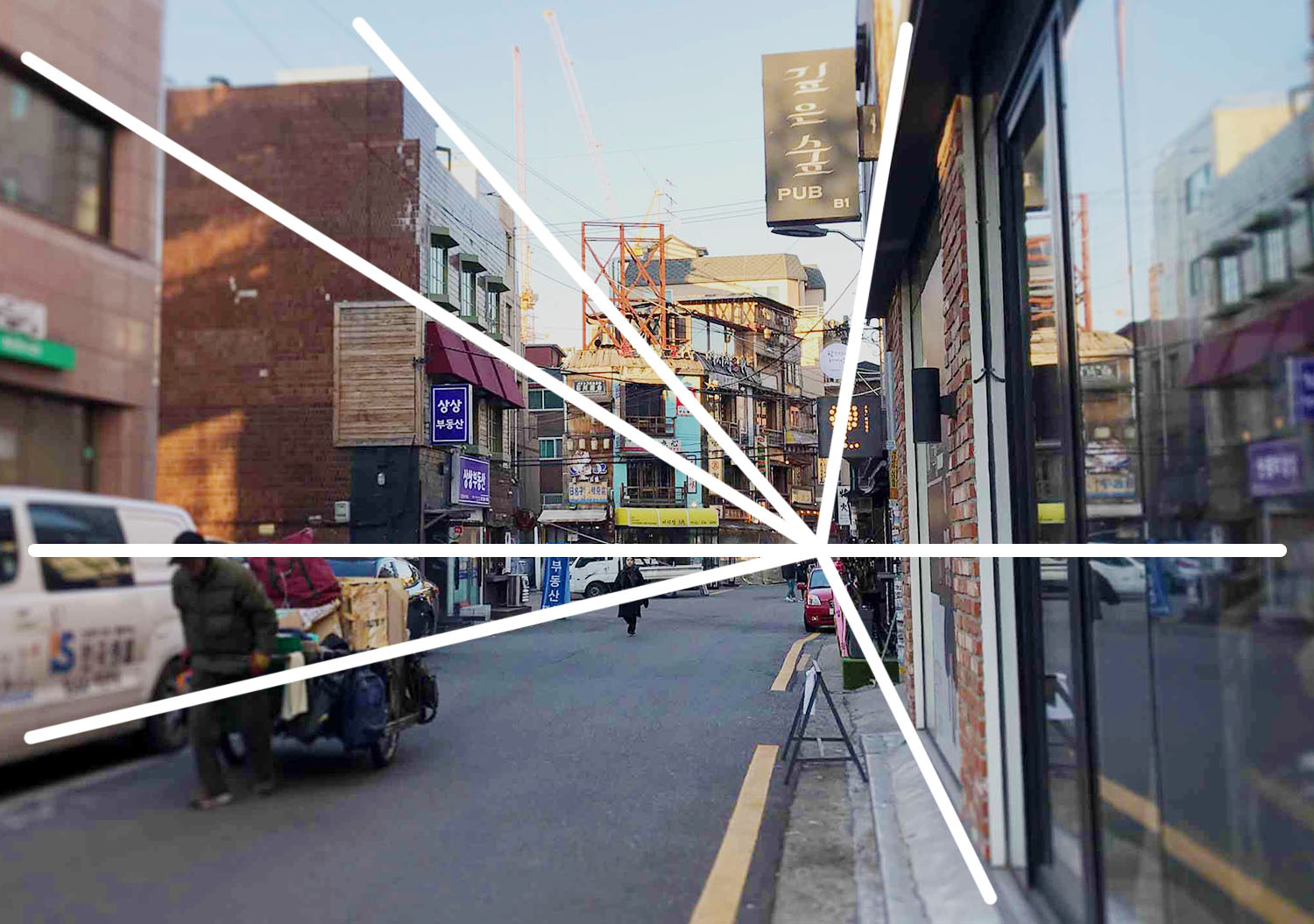
Vanishing points are the points on the horizon line to which certain lines in the drawing converge. Depending on how many vanishing points are present in your image, all lines may converge to one or more vanishing points, or only some.
Vanishing lines are the lines that lead from the objects in your drawing to the vanishing points. These guiding lines help to determine the correct perspective and the position of objects relative to each other.
Tools for Perspective Drawing
In perspective drawing, tools are often indispensable, especially for beginners. Rulers and set squares can be extremely helpful in creating precise lines and perspectives. They serve to draw parallel lines correctly and generate the desired perspectives.
With sufficient practice and experience, artists can eventually do without these tools. Handling rulers and set squares may require extra time and can slow down the creative process. For advanced artists, freehand drawing offers more artistic freedom.
However, it is important to note that the need for tools also depends heavily on the desired subject and drawing style. If the goal is to draw a precise and perfect image, such as an accurate house or an architectural representation, even experienced artists are advised to use rulers and set squares.
On the other hand, if an organic and not perfectly straight drawing style is sought, tools can be dispensed with. In this case, the drawing can gain more character and liveliness, as it moves away from strict geometry and highlights the artist’s creativity.
Perspective Drawing
Initially, perspective drawing can seem a bit confusing, but once you know the basic principles, it is not that difficult. A clean sketch is extremely important for these complex images, and the more elements present in the image, the more important it is to work step by step from the elements in the foreground to those in the background.
Central Perspective
Central perspective is the simplest perspective because you use only one vanishing point and place it directly in the middle of the horizon line.
All surfaces and their edges that are facing the viewer are not distorted in perspective. This means that the corners of these surfaces maintain an angle of 90 degrees in rectangular shapes.
All side surfaces and their edges, however, are distorted in perspective, using the vanishing point line.
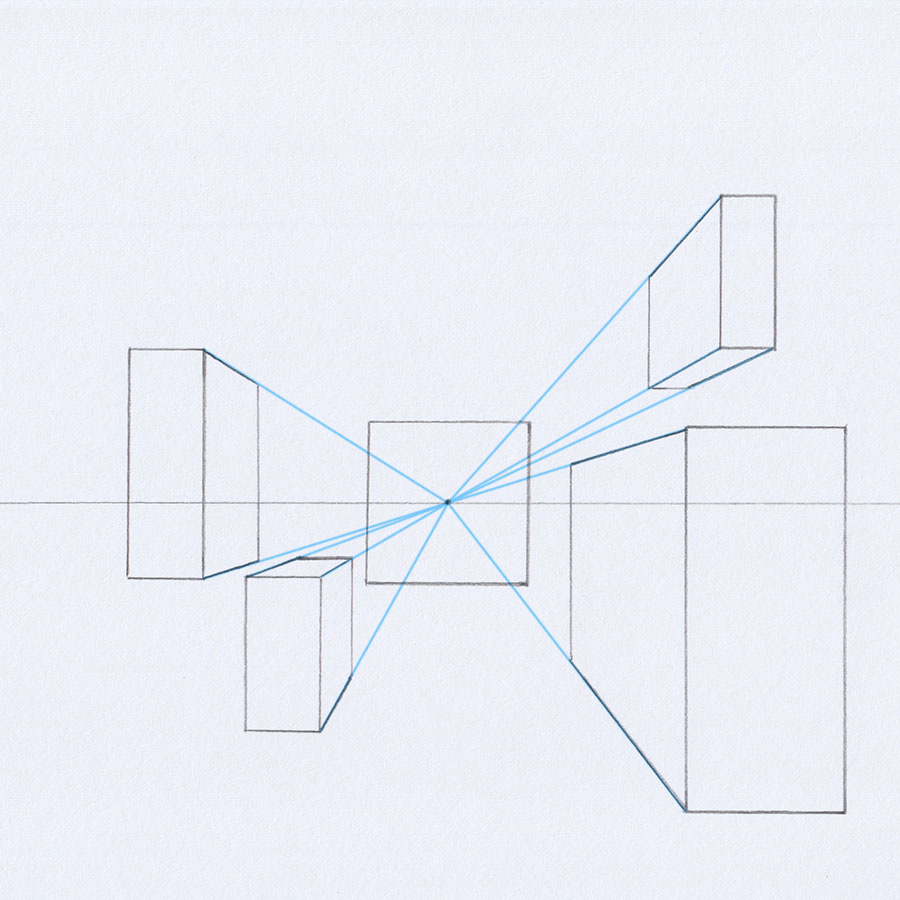
One-Point Perspective
One-point perspective is very similar to central perspective, as both perspectives work with only one vanishing point. The difference, however, lies in the positioning of the vanishing point, as in one-point perspective, the vanishing point is not in the middle of the horizon line.
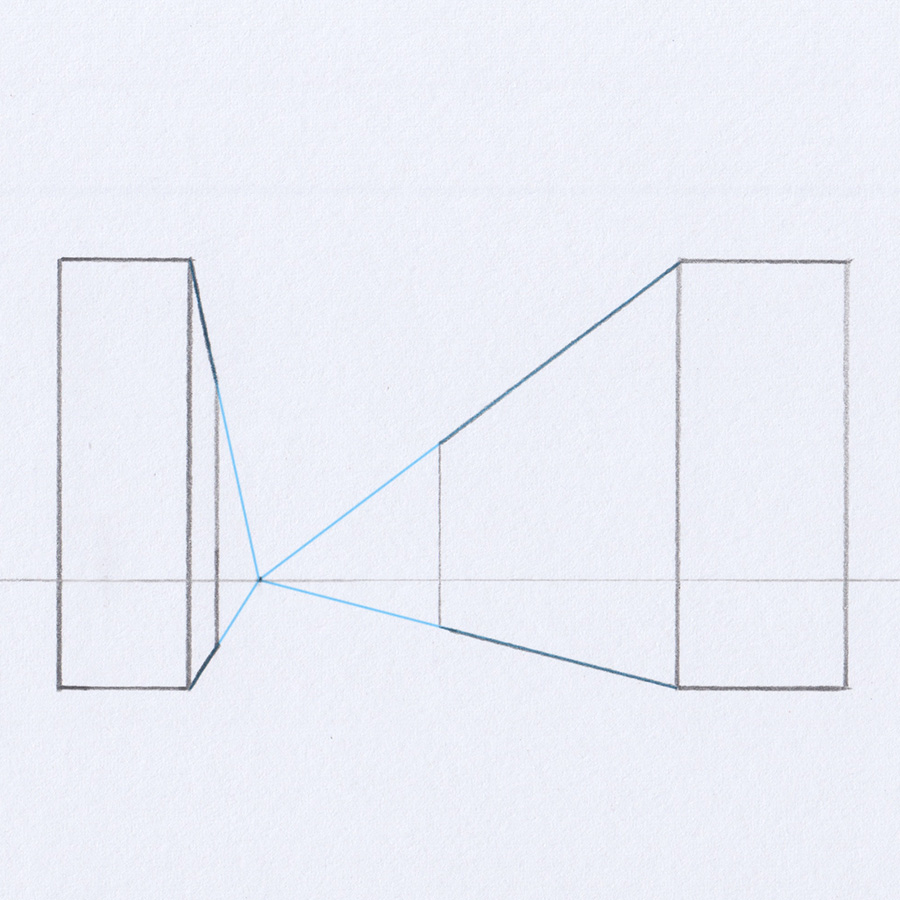
Two-Point Perspective
As the name suggests, two-point perspective works with two vanishing points on the horizon line.
The surfaces and edges are distorted towards either the left or right vanishing point, depending on their orientation.
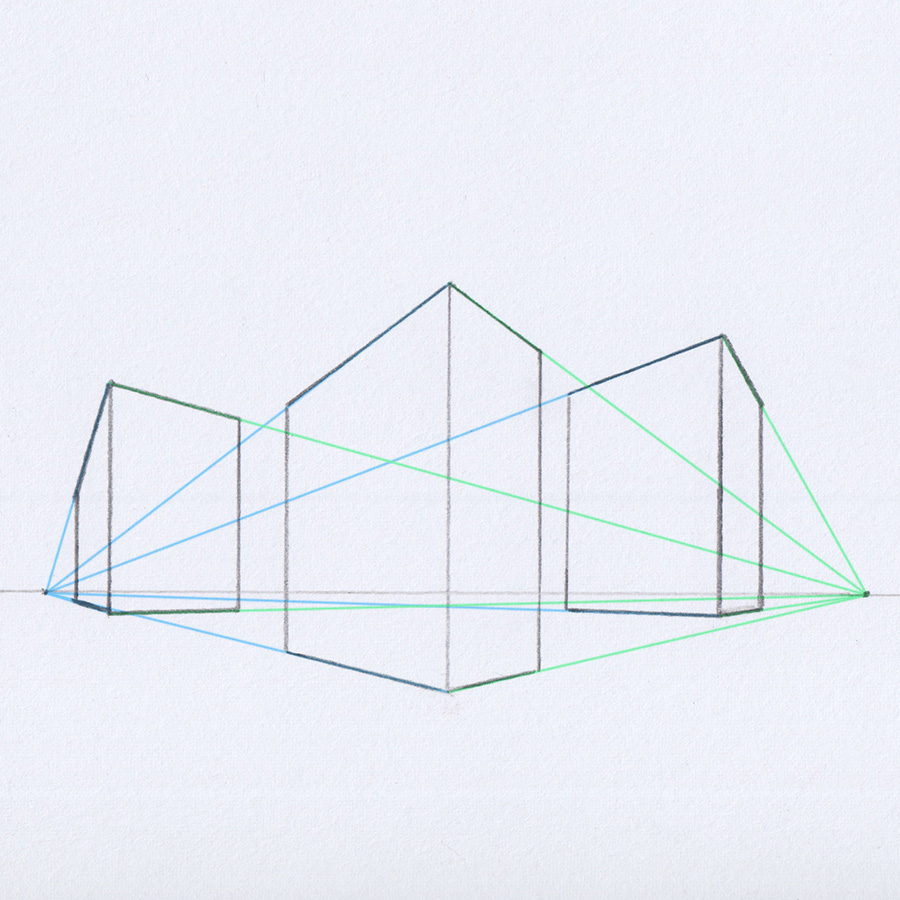
Three-Point Perspective
In three-point perspective, in addition to the two vanishing points on the horizon line, a third one is added.
If you place the third vanishing point above the horizon line, it appears as if the viewer is looking up at the object from below.
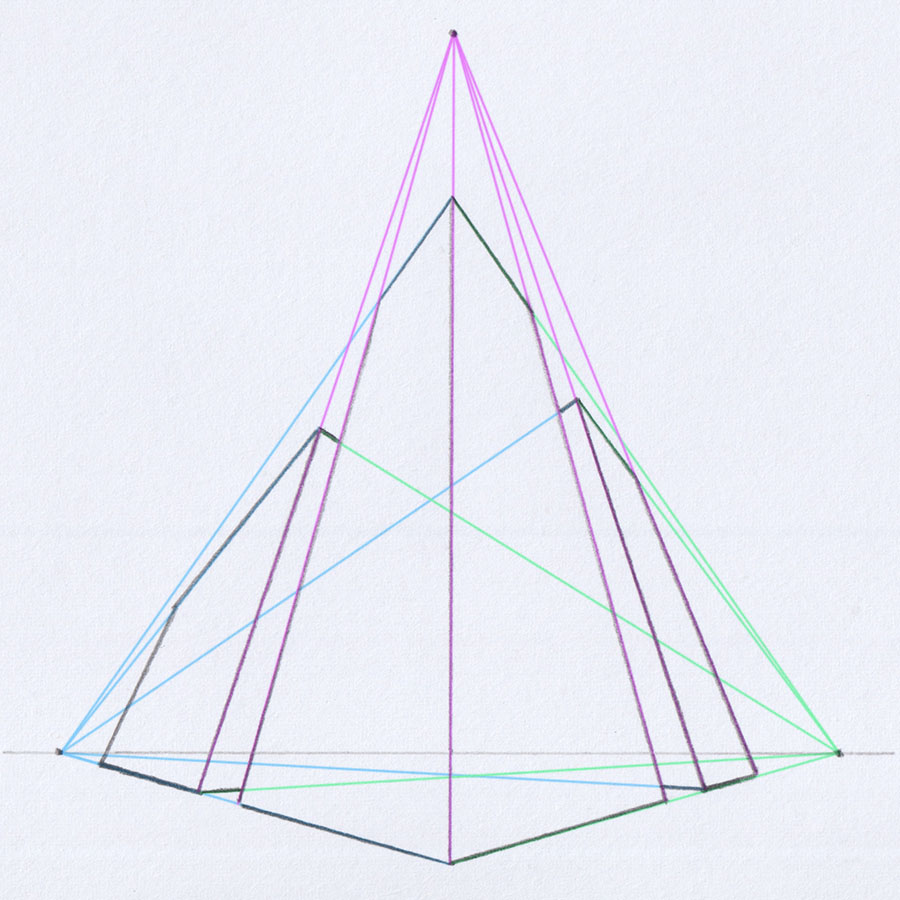
If you place the third vanishing point below the horizon line, it appears as if the viewer is looking down at the object from above.
